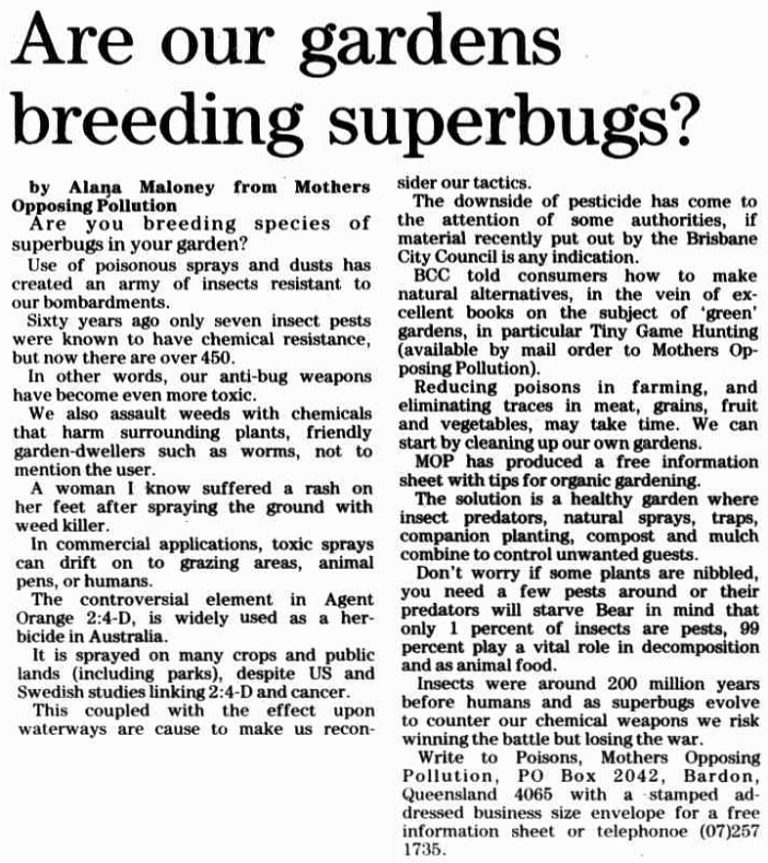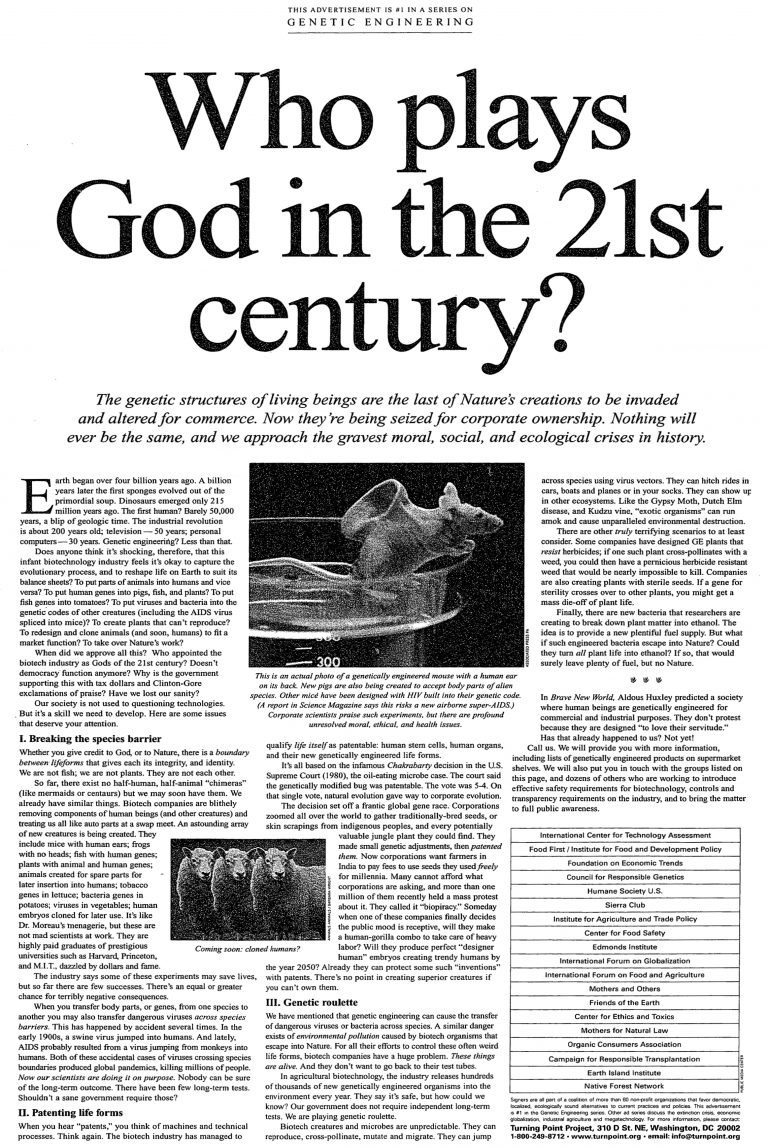Editorial: Do lobby groups and political parties stage fake front group campaigns?
The Department of Education and Training in Victoria, Australia has established a Safe Schools program with the aim of creating an inclusive and safe environment for school communities, including LGBTI students, families, and teachers.
However, the video above heavily criticises Safe Schools, accusing it of sexualising children. The video was first posted on the Facebook page of “Politicalpostingmumma” and then later on the “You’re Teaching Our Children What” anti-Safe Schools website. It has now been viewed on Facebook more than 4 million times.
On 12 August 2017, The Age newspaper published an article in response to the video. Article authors Farrah Tomazin and Henrietta Cook accuse Politicalpostingmumma of staging a fake front group campaign on behalf of the Australian Christian Lobby (ACL) and the Liberal Party of Australia. They assert that:
- Politicalpostingmumma’s claims in regard to Safe Schools are not true.
- Politicalpostingmumma’s real name is Marijke Rancie.
- The “You’re Teaching Our Children What” website has the same server and registrar as the Australian Christian Lobby.
- Rancie is a Liberal Party member.
- Elements of the Liberal party are working to re-energise its conservative base through a membership drive targeting a range of groups including Christian organisations, with Safe Schools seen as a good recruitment tool.
- Rancie has close connections with other Safe Schools opponents in the Liberal Party and religious right.
Could Politicalpostingmumma really be staging a fake front group campaign?
I’m not going to enter the debate in regard to the content of either Politicalpostingmumma’s video or the Safe Schools program. Rather, the aim of this article is to explore the accusation in The Age article that Politicalpostingmumma is staging a fake front group campaign on behalf of the Australian Christian Lobby and the Liberal Party of Australia.
Could this really happen? Could a religious group and a political party actually stage a fake front group campaign to advance their interests?
To begin our exploration of this accusation, let’s first take a look at the following newspaper article. It dates from 1995, well before the commencement of the so-called post-truth era. Have a read through it:

Do you notice any obvious problems with it? It’s an innocent enough looking article about an environmental problem, apparently written by a person named Alana Maloney on behalf of the Australian community group Mothers Opposing Pollution (MOP). At the time, many Australians will already have been familiar with Mothers Opposing Pollution from the materials that they distributed through supermarkets, so would not have given the credibility of this article a second thought.
But innocent it was certainly not. Alana Maloney wasn’t a real person, and Mothers Opposing Pollution was a fake front group1:
Mothers Opposing Pollution (MOP) … billed itself as “the largest women’s environmental group in Australia with thousands of supporters across the country.” MOP presented an impressive facade. For an annual subscription of AU $39.95, supporters could get an environmental awareness certificate, tree-growing instructions and seeds, and 10 percent off MOP products such as soap or facial cleanser. The truly conscientious could buy MOP badges through supermarkets to raise funds for turtle research.
MOP’s spokeswoman, Alana Maloney, also waged a public awareness campaign against plastic milk bottles for their supposed carcinogenic properties. She raised additional concerns about the degradation of milk by UV rays that can penetrate the plastic.
MOP operated for several years until investigative journalists for Brisbane’s Courier-Mail, unable to locate the armies of outraged Australian women united against plastic milk bottles, unraveled its identity. They found that Alana Maloney did not exist. She was a cutout, a stand-in for someone else and some other interest.
So who was behind Mothers Opposing Pollution? The Australian press traced it back to a PR professional, who while waging a phony campaign against plastic milk cartons was found to have business links to a firm that consulted for the paper milk-carton industry.
I was very aware of the Mothers Opposing Pollution scam due to my membership at the time of an environment group in the Australian state of Queensland. Our group had been threatened with legal action by the paper milk carton industry because we had publicly promoted the findings of research showing that plastic milk bottles were environmentally better across their lifecycle.
Because of this experience, we became very suspicious of Mothers Opposing Pollution after seeing the heavy slant towards paper milk cartons in their information materials. We became even more suspicious when our calls to their contact number were answered by what appeared to be a well-staffed call centre, while at the same time we were given the cold shoulder in regard to our requests to attend group meetings.
We contacted the Wilderness Society, to find that they and other environment groups also had serious concerns about Mothers Opposing Pollution. Collectively, these groups encouraged the media to launch an investigation:
Following persistent criticisms from environment groups, the Courier Mail, a newspaper in Queensland, discovered that “Mrs Alana Maloney” was in fact Janet Rundle, who heads a public relations company called J.R. and Associates. Rundle is also a co-director, along with Trevor Munnery, of a company called Vita Snax, and Munnery has his own PR firm called Unlimited Public Relations, which works for the Association of Liquidpaperboard Carton Manufacturers (ALC)—the makers of paper milk cartons.
If we hadn’t been threatened with legal action ourselves, we may never have become suspicious of Mothers Opposing Pollution. Indeed, the members of some other environment groups had been completely captured by what was a cleverly designed and large-scale scam. For example, when attending the meeting of another environment group at the time I denounced Mothers Opposing Pollution, only to incur the angry wrath of a number of the women present who labelled me as anti-women and anti-mother.
Mothers Opposing Pollution is unfortunately not an isolated aberration. As Professor Sharon Beder of the University of Wollongong states in her book Global Spin: The Corporate Assault on Environmentalism, Mothers Opposing Pollution is just one of many fake environmental “front groups” used by corporations and industry associations to promote their interests and agendas2. As Beder documents, these front groups have been and continue to be significant contributors to climate science denial.
The Center for Media and Democracy’s SourceWatch website also has an extensive list of examples of front groups.
So we can see that corporate and industry lobby groups, such as those working for paper milk carton manufacturers, can stage sophisticated fake front group campaigns that successfully con a lot of people.
But we can still trust other groups, can’t we?
You might be thinking right now that corporations and industry groups are motivated by profits, so of course there’s a big incentive for them to stage fake front group campaigns in the pursuit of their interests. But, you argue, environment groups on the other hand are motivated by the good of the planet, and religious groups like the Australian Christian Lobby would be motivated by the good of the community, so what these lobby groups say can be trusted, right?
Let’s take a look at another example, this time a full-page advertisement that appeared in the New York Times on 11 October 1999, again well before the commencement of the so-called post-truth era. It was the first advertisement placed by the Turning Point Project, a coalition of more than 60 non-profit organisations formed with the aim of publishing a series of advertisements concerning the major issues of the new millennium. The organisations making up the Turning Point Project included high-profile environment groups such as the Sierra Club and Friends of the Earth.
The advertisement, titled “Who plays God in the 21st century”, raised serious concerns about genetic engineering. It featured the striking image of a mouse with what appeared to be a human ear on it’s back, bearing the caption “This is an actual photo of a genetically engineered mouse with a human ear on its back”:

This “mouse with the human ear” image had shocked the public since it first appeared in 1997, and was widely circulated through anti-genetic engineering emails, becoming the then equivalent of today’s viral social media posts.
But as Australian science communicator Dr Karl Kruszelnicki alerts, the claim that the “mouse with the human ear” is genetically engineered is actually completely false:
On October 11, 1999, the anti-genetics group, Turning Point Project, placed a full-page ad in the New York Times showing the photo of the mouse with the human ear, with a misleading caption that read, “This is an actual photo of a genetically engineered mouse with a human ear on its back”. In truth, the mouse was not genetically engineered, and the “ear” had no human cells in it.
A “genetically engineered mouse” would have to have its DNA (its genetic “blueprint”) modified. The Turning Point propaganda implied that some DNA from a human (the section that has the blueprint for making the human ear) had been inserted into the DNA of the mouse. Then, this human DNA had somehow taken over the mouse DNA, and commanded it to grow a human ear. But it never happened – the mouse in the famous photo had never been genetically engineered.
The “ear” was actually constructed from cartilage, with the aim of creating “spare” ears for transplants. Human ears are often damaged in fights, fires, and car accidents, and disease can cause small ears or even their complete absence. But as Kruszelnicki explains, human ears are very difficult to repair or reconstruct, so “spare” ones can be of great benefit to patients:
The “mouse-ear” project began in 1989, when Charles Vacanti … managed to grow a small piece of human cartilage on a biodegradable scaffold. The scaffold was the same synthetic material (99% polyglycolic acid and 1% polylactic acid) used in dissolving surgical stitches. … His surgeon colleagues had told him that the human ear was the body’s most difficult cartilaginous tissue to reconstruct and rebuild – and that they would love to have a “spare” ear to transplant.
After 8 years, Charle’s [sic] team got to the stage where they could mould their sterile biodegradable mesh into the exact shape of a 3 year-old’s ear. The next step was to seed this ear-shaped scaffold with cartilage cells from the knee of a cow … The cartilaginous ear was implanted under the skin layer of the mouse, but over the muscle layer. Over some three months, the mouse grew extra blood vessels that nourished the cow cartilage cells, that then grew and infiltrated into the biodegradable scaffolding (which had the shape of a human ear). By the time that the scaffolding had dissolved away, the cartilage had enough structural integrity to support itself.
The ear was never transplanted onto a human because the presence of cow cells meant that it would have been rejected by the human immune system. But the same technology was later used by the Vacanti brothers to grow a “chest plate” in a 12 year-old boy who was born with no bone or cartilage on his left chest. They used the boy’s own cartilage cells, but again this wasn’t genetic engineering:
like the mouse with the “human” ear, there was absolutely no genetic engineering involved – only genuine scientific invention…
Before you start to think “maybe they didn’t know” in regard to the Turning Point Project’s misuse of the “mouse with the human ear” image, consider the publicity this medical breakthrough received:
In August 1997, Joseph Vacanti and his colleagues wrote their ground-breaking paper in the journal, Plastic and Reconstructive Surgery. The publicity was enormous, helped by a film made by the BBC’s Tomorrow’s World.
The 60 non-profit organisations making up the Turning Point Project had been very happy to misuse what was a landmark advance in medical science to advance their campaign against genetic engineering.
Just as fake front environment group campaigns have significantly influenced climate science denial, Kruszelnicki contends that the “mouse with the human ear” campaign has significantly influenced public attitudes towards genetic engineering:
Back in 1997, a rather bizarre photograph suddenly became very famous. It showed a totally hairless mouse, with what appeared to be a human ear growing out of its back. That photograph prompted a wave of protest against genetic engineering, which continues today. But there was absolutely no genetic engineering involved in getting that ear to cover almost all of the mouse’s back.
So we can see that, just like corporate and industry lobby groups, non-profit organisations such as environment groups can also stage fake front group campaigns that successfully con a lot of people.
You may well be very surprised by this, because non-profit organisations are typically considered to be more trustworthy than corporations or government. Writing in The Guardian, sustainable business editor Marc Gunther argues that this actually gives non-profit organisations a propaganda advantage over big business:
When non-profit organizations do battle with big business, the non-profits – or public interest groups, if you prefer – have a major advantage: They are trusted, far more than corporations or the government.
This helps explain why so many people – 48%, according to Gallup – believe that foods produced using genetic engineering pose a serious health hazard, despite assurances from corporations, government regulators and mainstream scientists that the genetically modified organisms (GMOs) now on the market are safe and, indeed, have been studied, tested and regulated more than any other food product in history.
Who, after all, are you going to believe: Monsanto, one of the most hated companies on the planet, or Friends of the Earth? When the Center for Food Safety warns of the dangers of genetically modified salmon, which it calls “Frankenfish,” retailers and restaurants pay attention – even if the US Food and Drug Administration (FDA) says it’s safe to eat.
From this, we can see that many people automatically trust the arguments of public interest groups, including religious groups like the Australian Christian Lobby. However, from an examination of non-government organisation (NGO) claims in regard to genetically modified organisms (GMOs), Marc Gunther advises that “advocacy groups – no matter what the issue – are not immune to pressures like other social institutions”, and so, at the very least, their arguments should be subjected to skepticism and fact-checking:
For consumers of information … [a most] important point is this: Be skeptical about the claims of NGOs, whether we’re talking about GMOs or anything else. After all, non-profits and the people who lead them are subject to the same temptations, pressures and incentives that drive companies: They are self-interested. They seek attention in a noisy marketplace. And they rely on the financial support of donors, just as companies depend on customers.
And what about political parties?
In their article in The Age newspaper, Farrah Tomazin and Henrietta Cook accuse Politicalpostingmumma of staging a fake front group campaign on behalf of not only the Australian Christian Lobby, but also the Liberal Party of Australia. Could this be true?
Writing in The Conversation, George Rennie exposes the significant influence that lobby groups have on Australian politics:
Over the past 20 years, lobbying activities in Australia have expanded dramatically. Following the United States’ lead, where a radical shift in ideology in the 1970s led to a re-evaluation of the way corporations view their role in society, the notion of corporate “civic duty” has been replaced by a belief that governments and the public are fair game for special interests.
Now, lobbying in Australia is a multi-billion dollar industry which employs a sophisticated strategy to win public opinion and political favours for its clients or members.
Australia’s Liberal-National Coalition has also reportedly been manipulating social media to increase its perceived popularity. This suggests that it is willing to use strategies involving fake or misleading information to advance its interests. Torin Peel writes in Independent Australia:
The Coalition has ramped up their campaign on Twitter, going as far as buying hundreds of thousands of followers and spamming the social network with the same messages.
My investigation discovered how it appeared the Coalition had so much support on social media, and how they were getting their message out. What I found was shocking, and shows how low they are willing to go to look popular online.
The Australian Christian Lobby has, however, been seen as having a declining influence on Australian politics. In a June 2016 article in The Conversation, Geoffrey Robinson charts its rise and apparent fall:
The Australian Christian Lobby (ACL) was formed in 1995 and rose to great heights after the 2004 federal election when John Howard was re-elected with an increased majority and Family First won a Senate seat.
But from 2013, the ACL’s political influence has notably declined, as Labor began to adopt progressive positions in the culture wars about sexuality and gender.
Robinson argues that unlike the situation in the United States, Australia’s political culture frowns on explicit religiousity. He also says that the Australian Christian Lobby’s campaign against Safe Schools is an attempt to reboot the organisation, but that it lacks the appeal of other populist right causes.
But this appears to have significantly changed in the past month. James Campbell writes in the Herald Sun about a new religious coalition that has come together to push the “no” case in Australia’s recently announced same sex marriage postal vote. Campbell reveals that organisations in this religious coalition have agreed to share their membership databases, which can potentially make it a potent force:
Two weeks ago, the 80 groups under leadership of the Australian Christian Lobby, Marriage Alliance, the Catholic Archdiocese of Sydney and the Anglican Diocese of Sydney formed the Coalition for Marriage (C4M), an umbrella organisation to fight for the “no” case.
Critically, groups have agreed to share their databases, which could contain the names of anywhere between one and three million voters.
When this beano is over this organisation is going to form the nucleus of a right-wing alternative to the left-wing Get Up!
Obviously a group with a mailing list that long is both an opportunity and a threat for the Liberal Party. On one hand the numbers it could bring to campaigning have the potential to make up for the party’s manpower deficit. But on the other, if even a fraction of the people on the C4M list were to actually join the Liberal Party, it would soon be a very different party indeed.
Campbell concludes by saying that:
Whether the hopes of the people behind the C4M are realised remains to be seen … Evangelical Christianity in Australia is not the potent force it is in America. But make no mistake, they’re using this vote to have a red-hot go.
The Coalition for Marriage is actively campaigning against both Safe Schools and same sex marriage, and as James Campbell has revealed, its emergence as a potentially potent force has significant implications for the Liberal Party of Australia. One way for the Liberal Party of Australia to start dealing with the ramifications of the Coalition for Marriage would be through “behind the scenes” arrangements. We’ve also seen that lobby groups significantly influence Australian politics, and that the Liberal-National Coalition has reportedly already been manipulating social media to increase its perceived popularity.
While this evidence is circumstantial, it does point to the likelihood of the Liberal Party of Australia being involved in Politicalpostingmumma’s apparent fake front group campaign.
What can we conclude about Politicalpostingmumma’s campaign?
The example of Mothers Opposing Pollution shows us that lobby groups can and do stage fake front group campaigns to advance their interests. We’ve also seen from the work of Professor Sharon Beder of the University of Wollongong and the many examples listed on the Center for Media and Democracy’s SourceWatch website that fake front group campaigns are widespread, and have been around for decades.
Politicalpostingmumma created a Facebook page and promoted her video without giving her name or providing any information on her organisational or political affiliations. Fake front group campaigns have been so prevalent for so long that any person or organisation prominently promoting a particular point of view without stating their real name or providing a checkable context for their views can be considered to be very likely staging a fake front group campaign.
Choosing the name “Politicalpostingmumma” and the frequent encouragement of “mumma warriors” on her Facebook page actually very much echoes the “the largest women’s environmental group in Australia with thousands of supporters across the country” approach of Mothers Opposing Pollution.
The example of the “mouse with the human ear” shows us that non-profit and public interest organisations are just as capable of staging fake front group campaigns as corporate and industry lobby groups. Because of this, we’ve been advised that their arguments should be subjected to skepticism and fact-checking.
We’ve also seen that there is circumstantial evidence for the likelihood of the Liberal Party of Australia being involved in Politicalpostingmumma’s apparent fake front group campaign.
So it’s entirely appropriate for the The Age to be skeptical of Politicalpostingmumma’s video, and to then investigate her and her claims, and then on the basis of the evidence found, to argue that Politicalpostingmumma is staging a fake front group campaign on behalf of the Australian Christian Lobby and the Liberal Party of Australia.
How can we counter the influence of fake front group campaigns?
Check that information is factually correct before sharing it
Politicalpostingmumma’s video has been widely shared, resulting in it having been viewed more that 4 million times. How many of the people who viewed the video took the time to check the facts before they shared it?
Most people would object to suggestions that they would happily subject themselves to mind control, but sharing information that has been circulated as part of a fake front group campaign is doing exactly that.
Before you share any information, either on social media or face-to-face, you need to be sure that it’s factually correct (unless of course you’re sharing it to raise concerns about it or critique it).
For example, before sharing Politicalpostingmumma’s video, people need to first investigate the facts in regard to Safe Schools, and then compare these facts to the claims made by Politicalpostingmumma. Details of the Safe Schools curriculum aren’t hard to find online.
Become aware of your cognitive biases and how they affect your thinking and views
Learn about your cognitive biases, including saving the simplified cheat sheet to your mobile phone as a constant reminder (at least until you’re more familiar with them).
Think about how your cognitive biases affect the way you relate to information, including how they can lead you to be more inclined to automatically believe information from organisations you view as trustworthy.
Please stop talking about this being the post-truth era
One view of the world that has resulted from people’s cognitive biases is the idea that we have suddenly entered the post-truth era following the the 23 June 2016 Brexit referendum and the 8 November 2016 United States presidential election.
Fake news and post-truth politics are supposedly hallmarks of the “post-truth era”. But as can be seen from the examples in this article, fake news was a common reality 20 years ago, and in a previous article in RealKM Magazine I show how fake news and post-truth politics were a reality well before that.
Have we ever actually been in a “truth era”?
References
Also published on Medium.







I am totally dismayed and even shocked that a major newspaper such as The Age is publishing total lies and nonsense. I think if Ms Rancie had the finanical support she could sue this “news” paper for defamation. It’s shocking to think that a paper that many years ago was read by people who wanted toe factsand the truth, not sensationalist rubbish. I will never buy a copy ever again. Shame on you, The Age. You have fallen way, way below what your standards used to be.